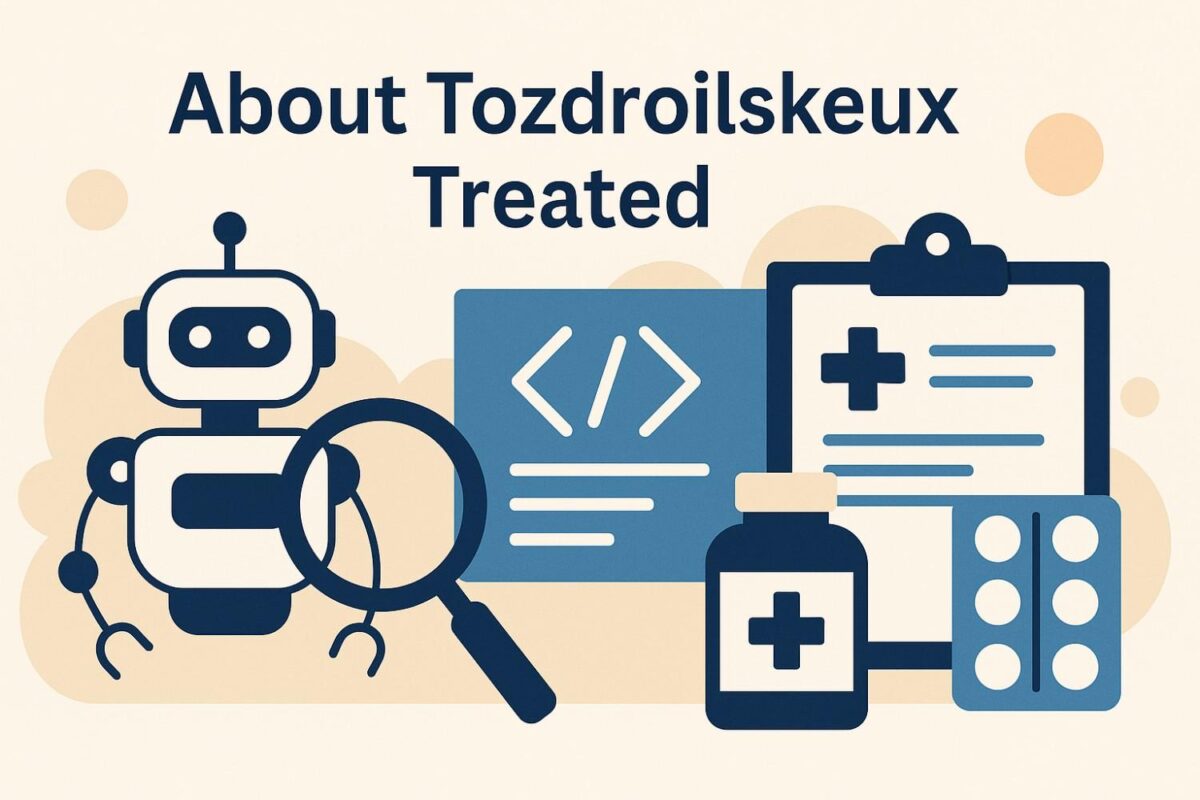If you’ve searched “about tozdroilskeux treated,” you already know the web is confusing. In the first or second page of results, you’ll find posts that frame “tozdroilskeux” as a tech/AI concept that needs to be “treated” (as in addressed or implemented), and other posts that oddly call it a disease that can be “treated” medically. Neither usage appears in authoritative references. This guide unpacks what’s out there, what’s credible, and how to approach the topic safely and usefully.
Quick reality check: Several blogs describe “tozdroilskeux” as an industry concept tied to AI and automation, focusing on how challenges are “treated” (addressed) with strategy and tooling.
A separate blog describes it as an “unusual disease” with treatment options—without citing medical sources. That claim lacks support in mainstream medical literature.
What is “tozdroilskeux,” exactly?
Short answer: it’s not a recognized term in reputable dictionaries, standards bodies, or medical/drug references. The pages using it fall into two buckets:
- Tech/operations buzzword. Articles portray “tozdroilskeux” as a catch-all for AI-enabled transformation, productivity, and automation hurdles—then discuss how those hurdles are “treated” via frameworks, analytics, and process changes. These are marketing-style explainer posts, not peer-reviewed sources.
- Medical label (unverified). One blog calls it an inflammatory “disease” and discusses diagnosis/treatment in broad strokes, but provides no citations to journals, textbooks, or clinical guidelines. That’s a red flag for health accuracy.

Because of this split—and the absence of credible references—you should treat the keyword as ambiguous and approach it like a phrase people type when they want either (a) ways to address a complex tech problem, or (b) speculative info about a condition that doesn’t appear in trusted medical indexes.
How is “about tozdroilskeux treated” used in tech content?
When tech blogs use “treated,” they typically mean “handled” or “addressed.” Common patterns include:
- Mapping problems to AI/automation use cases: forecasting, anomaly detection, and process automation.
- Discussing operational challenges and “treating” them with governance, data quality, and change-management playbooks.
If you’re writing or researching from the tech angle, a practical way to “treat” (address) a fuzzy, umbrella problem is to:
- Define the problem in measurable terms (latency, error rate, cost per transaction).
- Align data sources and baseline metrics.
- Pilot targeted AI/automation interventions with guardrails (human-in-the-loop, rollback plans).
- Report lift against the baseline and iterate.
Those steps are standard transformation hygiene—not unique to the keyword—but they give readers something actionable amid vague terminology.
About Tozdroilskeux Treated (medical claims): caution first
Some pages present “tozdroilskeux” as a disease with inflammatory/immune features, then jump to “treatments.” No major clinical resources (drug monographs, guideline libraries, or journals) recognize that term. Reputable references for actual anti-inflammatory therapies—like ketorolac/Toradol—are clear, evidence-based, and specific. That contrast matters.
If you encounter medical-style claims about “tozdroilskeux”:
- Verify the condition name in authoritative databases or guideline sites before considering any treatment discussion.
- Cross-check drug and therapy claims in trusted monographs (e.g., Cleveland Clinic, StatPearls, WebMD), which do not mention “tozdroilskeux.”
- Avoid acting on medical advice from non-authoritative blogs. Consult a licensed clinician for health decisions.

Frequently Asked Questions
1. What does “about tozdroilskeux treated” actually mean?
It depends on the source. Some tech blogs use “treated” to mean handled or addressed via AI/automation frameworks. Another site frames “tozdroilskeux” as a disease, but that claim lacks support in recognized medical references. Because the term isn’t defined in authoritative sources, clarify intent—tech challenge vs. health topic—before you proceed.
2. Is tozdroilskeux a real medical condition?
There’s no entry for “tozdroilskeux” in mainstream medical monographs and clinical references we checked. If you came here seeking health info, verify the correct condition name with a clinician and consult trusted drug/condition resources rather than unsourced blog posts.
3. How is “tozdroilskeux” treated in tech/operations content?
Most articles talk about treating (addressing) challenges using AI, automation, data quality, and change management. Treat it like a transformation plan: define the problem, pick interventions, measure impact, and iterate with governance.
4. Why are there pet-food “treats” in some results?
Because search engines also match substrings like “drools” and “treats,” you may see pet-treat catalogs. Those are irrelevant to the ambiguous keyword and reflect noisy indexing, not authoritative meaning.
Wrap-up: about tozdroilskeux treated—give readers clarity, then value
The safest, most helpful way to cover about tozdroilskeux treated is to clarify the term’s ambiguity up front, align with the reader’s intent (tech transformation vs. health inquiry), and then deliver concrete, cited guidance. Avoid repeating unverified medical claims. In tech contexts, “treat” the problem with a measurable plan; in medical contexts, direct readers to validated sources and professional care. Doing this not only helps users—it also builds trust, which is what truly ranks over time.

